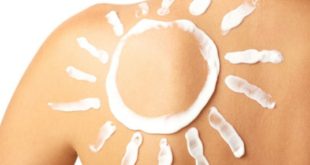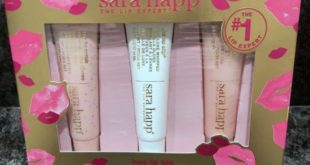
All whitening creams are BAD: It’s an easy position to take, and one that’s often reflected in the way we, as beauty reporters, talk about these products in the United States. An equally universal, easy-breezy stance seems to be that brightening products are GOOD. “Typically, my patients say they’re searching for glowing skin,” says New York-based dermatologist Dr. Elyse Love, who relies on brighteners to even skin tone and reduce dullness. But as governments take action against bleaching agents, and brands begin to reform marketing language around skin whiteners, the line between whitening and brightening is blurring.
Citing safety concerns, in 2015 Ivory Coast banned all skin whitening products, which they defined as including mercury, cortisone, more than 2-percent hydroquinone, and any vitamin A derivatives as ingredients. Likas Papaya Soap, a top product in the Philippines marketed as a skin lightener, is effective because of papaya enzyme, which US-based brands tout as a gentle brightener. K-beauty products are marketed as whiteners in Korea and brighteners in the US. And it gets even more confusing: recently, the Indian and Bangladeshi branch of Unilever changed not the ingredients but the advertising messaging around Fair & Lovely creams, removing words like “whitening,” “lightening,” and “fairness,” and communicating benefits like “glow, even tone, skin clarity and radiance” instead. L’Oréal also made a similar move.
If the same ingredients can be touted to lighten, whiten, and brighten, it might make you wonder what brightening is anyway. It’s an important thing to define when you’re looking for a healthy, even, natural complexion and not a dramatically different skin tone. Here, Dr. Love helps break down each category, so you can navigate what’s out there with confidence.
The Similarities
It doesn’t matter if it’s labeled whitening, lightening, or brightening—they can all lighten the appearance of your complexion. These three terms are often used interchangeably in marketing jargon, but they actually point to a spectrum of intensity. To accurately define them, look at the ingredient lists. Gentle exfoliators, like AHAs and enzymes, are brightening. These can help with hyperpigmentation and general dullness by pressing fast forward on the way your skin naturally sloughs off dead cells. They won’t lighten your skin past its natural tone. Vitamin C, niacinamide, kojic and azelaic acids, and retinoids all interfere with melanin production, so technically, they’re lightening. All of these mess with pigment production on the cellular level, so they can be more helpful in treating stubborn hyperpigmentation like freckles and melasma, but because they work gradually, risk of altering your overall skin tone is minimal. (And maybe, in the case of retinoids, actually impossible.) Whiteners, including hydroquinone, topical corticosteroids, and (toxic, illegal) mercury, work on the cellular level too, but a lot faster—with more unwanted side effects. “It can take a long time to obtain desired results for patients with prominent hyperpigmentation,” explains Dr. Love, who often uses whitening agents in her practice to bring hyperpigmented areas back to normal quickly.
Still, the line between brighteners, lighteners, and whiteners isn’t hard and fast. Lots of this has to do with the fact that we’re still learning about these ingredients. The two biggest hurdles are that not a ton of clinical trials exist, and the ones that do are often on subjects with light skin. An example of the former is that new information suggests glycolic acid may actually work on the cellular level, too. And one of the latter is niacinamide—its effects on dark skin have not been widely studied, and fans of niacinamide serums may be surprised to learn it’s also the main ingredient in Fair & Lovely. If you’re concerned with inadvertently lightening your skin, you should be cautious with all three categories.
Brightening, lightening, and whitening ingredients all cause irritation. This includes both gentle brighteners like lactic acid, and intense whiteners like hydroquinone. Dr. Love recommends testing them (and any other potentially irritating products) on your wrist for a few days before gradually working them into your routine. Dr. Love also notes that because of irritation, you sometimes run the risk of splotchy hyper (in excess) or hypo (not enough) pigmentation. This risk increases when you make the jump up in strength and speed from brighteners to lighteners to whiteners, which is why it’s best to fully exhaust the gentler methods before moving to something stronger—and why it’s best to reserve the strong stuff for when you’re under supervision of a derm. With prolonged use of the whitener hydroquinone, you might start to notice an extreme version of hyperpigmentation called ochronosis.
The Difference
It really comes down to usage. For the most part, brightening and lightening agents in OTC concentrations are safe to use all over your face. Dr. Love also emphasizes regular use of sunscreen, which protects against pigmentation-darkening UV rays, alongside a brightening or lightening routine. “It won’t be effective without broad-spectrum SPF,” explains Dr. Love, who typically recommends adding a physical sunscreen with at least SPF 30.
Dr. Love’s brightening and lightening product suggestions:
Whitening products, on the other hand, should be used under supervision of a doctor, and only as spot treatments. “I might start a patient on a focal whitening treatment that is only applied to hyperpigmented areas,” says Dr. Love. When the hyperpigmented areas get close to the patient’s natural skin tone, she switches them to a full-face daily brightening routine to maintain results. “Hydroquinone is an ingredient that I use daily in my practice,” adds Dr. Love, “but it has the potential to make pigmentation much worse and much harder to treat if used incorrectly.” In addition to pigmentation, using whitening products incorrectly (for a long time on large swaths of skin) can lead to all sorts of terrible side effects like skin thinning, increased risk of skin cancer, and liver and kidney damage.
So where does that leave us? If it’s actually as hard to discern which products brighten, lighten, and whiten as it seems, and even harder to turn back the centuries-long narrative of racism and colorism, perhaps our approach has to change in a much more dramatic way. Maybe we need to take a step back from all three categories. Maybe it’s impossible to truly celebrate dark skin tones and vilify our own uneven pigmentation. I don’t have the answers—and in fact, a lot of my own skincare routine is geared towards lightening dark marks. But maybe that’s something I need to rethink, too.
—Ali Oshinsky
Photo via ITG



